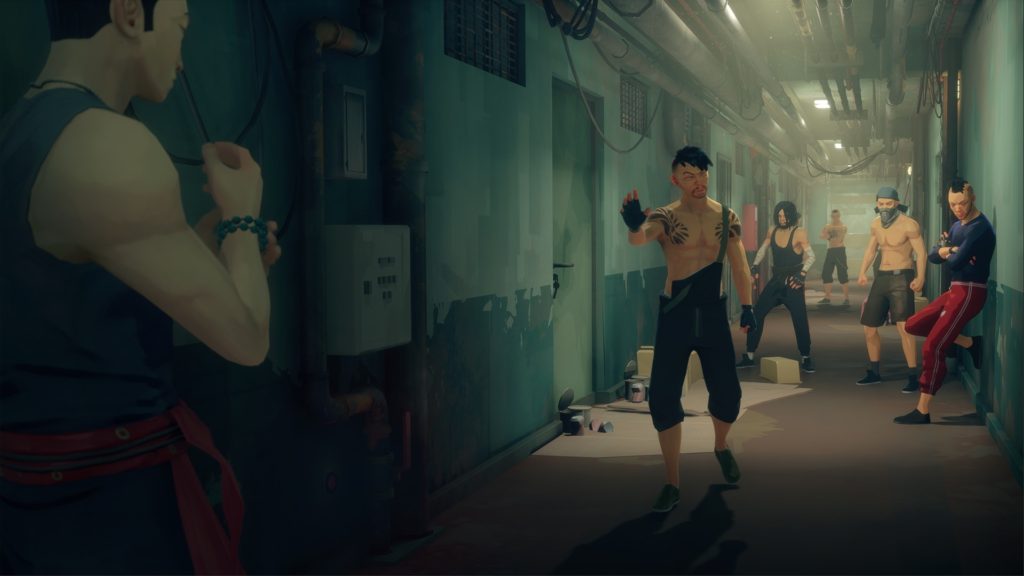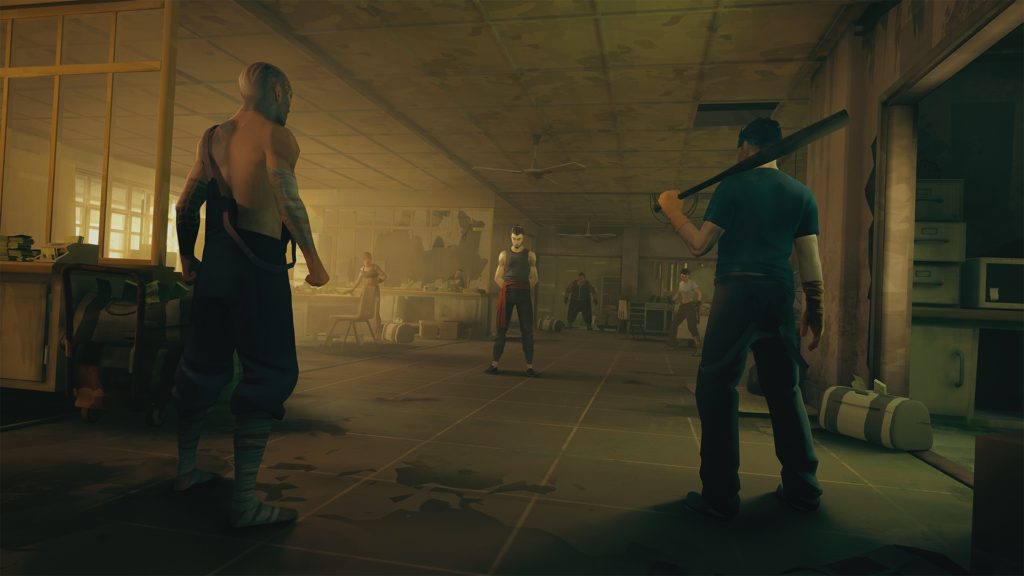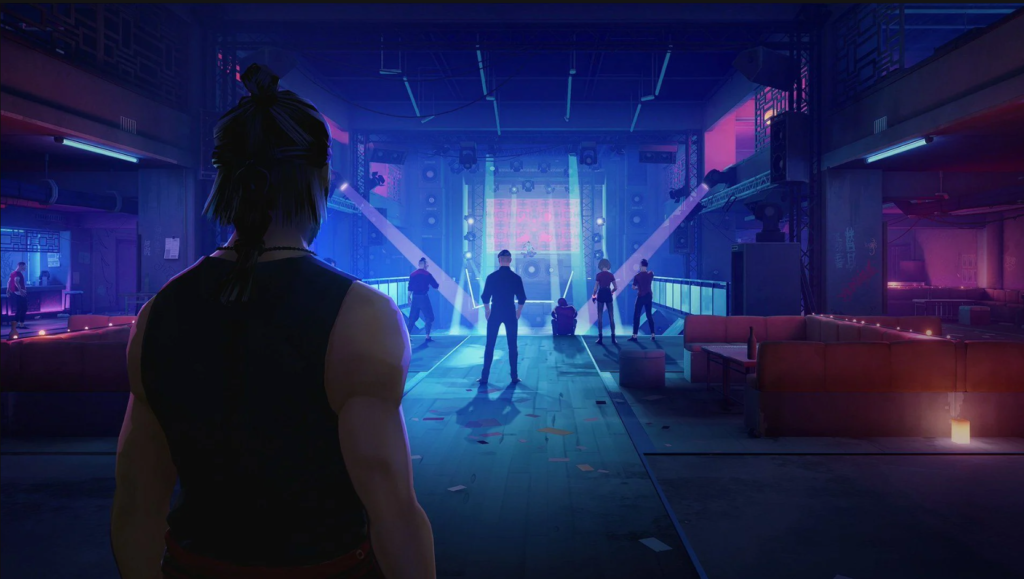Alex Birlo on March 21, 2023
I finally got around to write a review for Sifu. And as a huge fan of Sloclap’s previous project “Absolver”, from 2017, I was really hyped for anything coming from this developer. But this review will have an unusual format, because half of it is basically comparing the studio’s two games.
I spent roughly 20+ hours finishing “Sifu”, but the game is actually much shorter. 19 of those hours, were spent on farming the living hell out of the first two levels of the game, to permanently unlock all skills and pass these two levels completely without dying. And then I simply B-lined the rest of the game.
Sifu starts out as a simple revenge story, with the protagonist surviving an attack on their father’s Kung fu school as a child.
As a grownup, the player is presented with a detective board where, for all these years, the protagonist was collecting information on the group that orchestrated the attack.
The goal of the game is clear from the very beginning – you are there to track down and kill all of those who participated in the massacre of your father’s Kung fu school.
There is an alternative ending, arguably the “good ending”, that is triggered if you spare all the bosses, instead of killing them. Although I was slightly disappointed by both. But this is only because both of them made me feel more “sad” rather than triumphant, after the effort I put into beating the game (pun almost intended).
This is a visible change from the convoluted and mysterious, lore-focused story of Absolver. A story about an ancient fallen kingdom and an order of masked monks that fights across this land, given in bits and pieces that are scattered all over the game and in the rare NPC interactions. Much in the style of Soulsborne games.
But ultimately, this simplification perfectly serves the developers’ goal. And that goal is the pure focus on the gameplay mechanic and the perfection of every run you make.

Compared to the semi-open world and interconnected maze of locations that Sloclap created for Absolver – Sifu is linear.
There is no exploration or choice of where to go first, like in their previous project. But that is, again, because Sloclap’s goal was different.
The game consists of five levels. Each with its own wonderfully distinct and unique art design and layout. Each level is strictly linear as you play through it the first time around.
But as you explore the various rooms, you will find collectibles that will be added to your detective board back at home. These items will either expand on the overarching plot against your father’s school, or will be useful keys and keycards that will open shortcuts for future reruns of the level.
The fact that the game is linear, does not mean that the layout of the levels is boring, quite the opposite. The levels snake up and down, left and right, take you from building to building, and from rooftops to collapsing elevator shafts.
Every turn you make, takes you into an area that seems unique and presents a different terrain for the fight, yet it still feels like a part of the overall level.
What I liked the most, is how the closer you get to each boss, the more transformations you see in the surroundings. It happens as the design elements, like paints or neon lights, become more and more surreal until they almost “teleport” you closer to the final boss area.
Speaking about the bosses. The level design is so deliberate and narrow focused, that every element of the area and each line you hear from your enemies, somehow explains something about the boss. So much so, that when you enter the boss room, it almost feels as though you have already been well acquainted with the person you are about to fight.
But the goal of the level design is clear and very apparent, the developers were creating stages that can be learned, memorized and optimized – designed for speedrunners.
By the tenth time you will be playing through a level, you will feel almost compelled to behave like a speedrunner and optimize your approach to each encounter in every room. This can be a fun experience as long as you keep on trying to get better at the game.

I would say that I liked this game as a “soulslike” fan, rather than a “fighting” or a “beat ’em up” fan. Because the game might be categorized as the latter two, but it is most definitely heavy on the former one!
The entire gameplay loop revolves around the Medallion Mechanic. Where the character possesses a magical family heirloom in the form of a medallion with several ancient gold coins. Each of these coins is imbued with the power to bring you back to life after you die.
But reviving during a level has a cost – you lose years from your life span.
With each consecutive death, the character begins to lose more and more years and rapidly ages. This, in turn, brings a tradeoff where your maximum health points are reduced, but the damage of your attacks is increased.
But in theory, since each boss is extremely challenging, you want to remain as young as possible and not waste your years. So the game becomes a challenge where you naturally are incentivized to perfect each level and die as little as possible.
While consecutive deaths increase the amount of years you will lose with each future death, you can defeat mini-bosses during each level to lower that counter back to only one year. Thus, you are given a tool to prevent rapid aging, but not undoing the damage that was already done.
The game does its best to make you feel the consequences of missing a final blow or rushing a group of enemies instead of being smart about your approach.
Each time you die, you are also presented with a screen, where you can spend your earned experience points on new combos and abilities. Each ability, when purchased, is unlocked only for the current run and will not be available if you decide to restart a run from a previous level. But you have the option to unlock these moves and abilities permanently, if you acquire them five times.
Sifu is a martial arts game through and through. From beginning to end, you will find the absolute entirety of what it is, revolving around Kung fu. Compared to the ability to memorize the moves of enemies you encounter and then creating your own combos, or the ability to combine equipment and fighting styles into builds in Absolver, the only way you ever interact with the game in Sifu is through kicking ass – and that is perfectly fine by me.
The story is simple, the levels are linear, the enemies are split into a few recognizable archetypes. Everything is built around the player mastering each environment, learning move-sets and chaining combos to ace each level to the best of their abilities.

For me, as a hardcore Absolver player, Sifu was both a refreshing delight, perfectly scratching that martial arts itch. But also a slight disappointment, because Sloclap decided to go for a more polished but narrowly focused game, as opposed to developing the lore and combat style personalization that hooked me so much in Absolver.
In my view, Abolver had a very good thing going for it. An interesting lore, esthetic and an original core to their combat mechanic. The gear and combo customization enabled so much originality and replayability that people continued enjoying it for years, even with no new content.
Do not get me wrong, obviously Sifu has an enormous amount of replayability, but it is because the game is based around that death and replay loop.
Absolver’s replay value had more weight to it, because there are so many elements that could be tweaked and customized.
It had a farming loop that encouraged evading or blocking attacks of enemies whose moves you wanted to learn. As opposed to simply killing the same enemies on the same levels until you unlock a skill five times.
It had multiplayer modes, that while not too polished, were nevertheless fun. From duels to randomized co-op dungeons and team death matches. You had the element of uncertainty, as you met other players in the open world, not knowing if they are hostile or chill.
But even so, I am happy for Sloclap’s massive success with Sifu. Because creating a bigger Absolver game could have turned out to be too challenging and resource-demanding for the studio.
While Sifu, being the game that it is, allowed them to both put themselves on the table and perfect their signature focus on amazing melee combat!